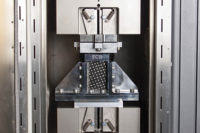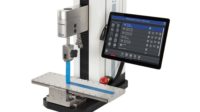Virtually every manufactured product should be tested – readers of this publication know that innately. How to test, under what conditions, and when require a deeper dive. In a world riddled with unpredictable supply chain shortages and increased barriers to free movement of goods, such as trade tariffs and buy-local rules, ensuring that products arrive at a customer in excellent condition is critical. It’s more important than ever to “get it right the first time.”
To reach this objective, manufacturers incorporate a variety of testing methods relative to the materials, components, and assemblies that they use and the products that they produce through a process known as materials testing.
What Is Materials Testing?
Materials testing submits a material or product to a thorough, in-depth health “check-up” to ensure overall quality. The process subjects a sample to controlled conditions defined by material testing standards. These standards were developed as a means to assess the material’s properties and behavior under stress-induced circumstances.
The two most widely-recognized organizations that develop and publish the standards referenced in materials testing are the American Society for Testing and Materials (ASTM) and the International Organization for Standardization (ISO).
Mechanical, physical, and chemical properties can be evaluated through material testing to determine if a material is suitable for a specific application and environmental exposure.
Depending on the use case of the part or product, the mechanical properties of a material used are the most crucial for those used in machinery or physical structures, while chemical properties are critical for those used in harsh environmental conditions, such as exposure to corrosive elements or chemicals.
Material properties that are commonly tested:
- Tensile Strength
- Compression Strength
- Shear Strength
- Flexure/Bend Strength
- Fatigue Testing
- Impact Testing
- Adhesion Strength
- Hardness
- Thermal Testing
This article focuses on mechanical testing, typically conducted with a universal testing machine (UTM), which produces and measures tensile and compressive loads. As the name implies, UTMs can be employed for a virtually unlimited number of applications, configured to specific testing standards and manufacturer specifications.
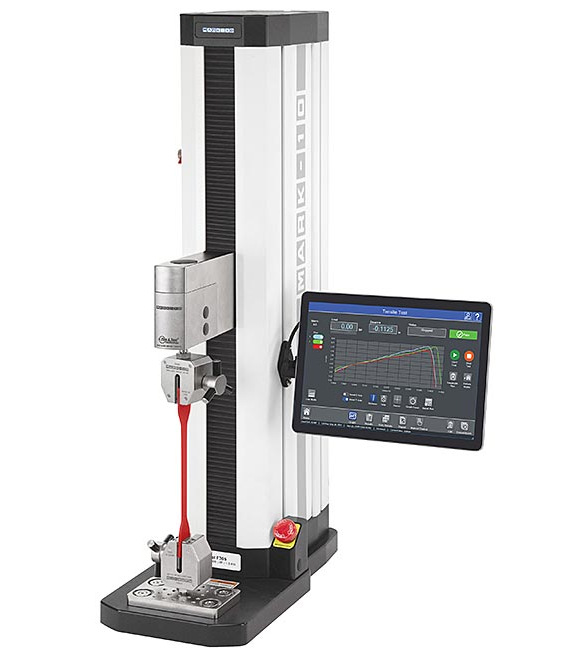
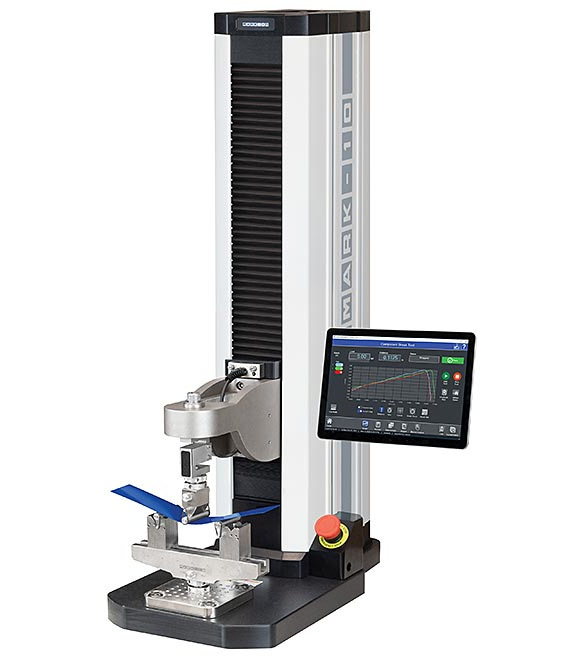
A UTM consists of several major components: an electromechanical or hydraulic test frame to produce load, a load cell to measure load, and an integrated control panel or PC-based motion control and measurement software. Some sample grips and fixtures are often designed to ASTM and ISO-specified sample geometries, while others accommodate other general needs.
The process of determining the essential mechanical properties of a material is spelled out in the many thousands of standards published for industry. A manufacturer must decide whether their quality objective can be achieved by an internally developed method or the instructions spelled out in a standard.
Simple tests may only require a measurement of the load and distance. Materials testing, however, requires the measurement of stress and strain and associated calculations, with some common examples explained below.
Stress and Strain: The essential measurements on which materials testing is built upon. Stress is the applied force on the sample per unit area, while strain is the deformation of its shape under this applied load.
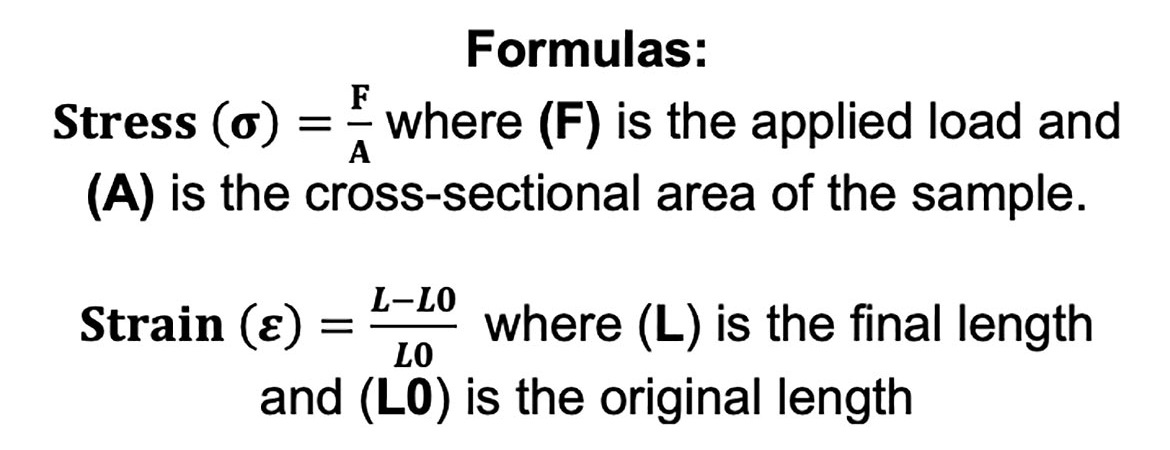
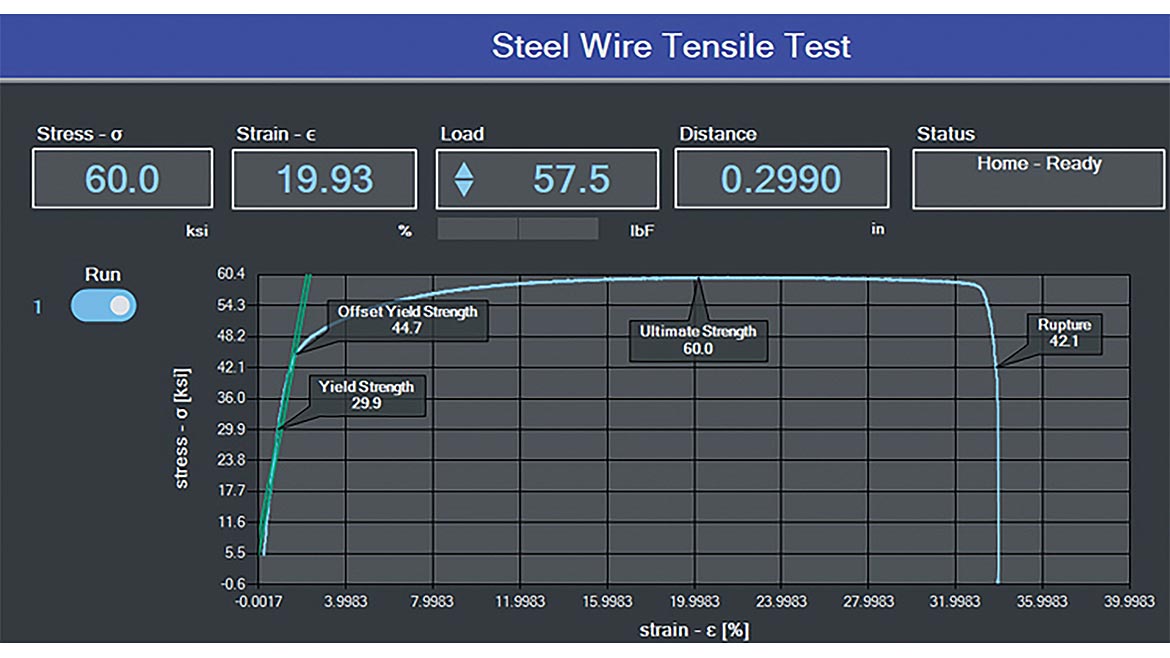
Young’s Modulus: One of the most fundamental definitions of a material’s elasticity, the ability of the material to deform under load and return to its original shape after a load is removed. Young’s Modulus is a measurement of the force per unit extension of a sample, incorporating the material’s cross-sectional area, and acquired from the slope of the elastic region of the graph. This region is found below the yield point, which marks the limit of the elastic region and the beginning of the plastic region where deformation will not return to normal after the release of a load.

Yield Strength: The stress that corresponds to the yield point where the material begins to experience plastic deformation. This value is often used to develop a maximum recommended load specification for the material.
Ultimate Tensile Strength: This is the point at which a material fails and can no longer hold the applied load. In some softer materials, a visible necking – or thinning – of the material may be noted, ultimately leading to rupture. Ultimate tensile strength is defines an absolute load limit a material can withstand before total failure.
Percent Elongation: This is the amount that a sample stretches from its original length under an applied load. Engineers must consider this material property in considering how to integrate a material or component into their final product. For example, elastic materials such as rubber and polyethylene are used to manufacture surgical gloves. Medical professionals should reasonably expect their gloves to stretch a given amount without rupturing.

Why Is Materials Testing Essential For Manufacturing?
Materials testing provides valuable information regarding the quality and performance of the material being tested, assisting design, engineering, and production personnel with pertinent data.
Here are some of the essential areas for which materials testing is critical:
Quality Assurance And Control
The testing of materials ensures that the input or raw materials used meet the specifications determined by the manufacturer or the published standard. By guaranteeing the initial quality of the raw materials used, manufacturers can avoid using sub-par materials that may potentially lead to downstream product defects and failures. Limiting these issues will not only improve the quality of production, but also the overall customer experience.
Quality assurance testing may take place during the initial design phase, in a quality control laboratory, or on the production floor to check batches of finished parts at regular intervals. Frequent testing identifies faulty parts quickly, thereby minimizing scrap and delays to customers.
Materials Selection
While designing a product such as the surgical glove example mentioned earlier, it is important to evaluate a variety of materials to determine the most suitable candidate. By assessing the product’s use case and conditions to which it will be exposed, testing can be conducted on several potential materials using identical test methods to rule out unsuitable candidates.
Supplier Selection
Once a material has been selected for a product design, the next step is to determine where to procure it from. The supplier should be able to prove that they have the capability to guarantee quality and performance characteristics. A supplier may be asked to provide test reports, but the user may also decide to perform incoming inspection as an additional layer of assurance. It may be advisable for the supplier and customer to use an identical testing apparatus in order to compare their test results on the same basis.
Regulatory Compliance
Whether mandated by a government agency, an industry association, or other requirement, manufacturers are well advised to adhere to relevant standards to avoid potential legal and financial penalties.
Materials testing equipment can be expensive, depending on the required equipment and financial resources of the manufacturer. When high costs, physical space constraints, or limited testing volumes are a concern, outsourcing testing to a qualified third-party testing lab can be a good solution.
Whether testing in-house or at a third-party location, materials testing helps manufacturers guarantee quality and ensure that their product is made right the first time. In a world more complex and difficult to navigate than before, it’s more important than ever to avoid rework and the cascading consequences that poor quality can cause. The extra upfront cost of effective material testing is easily justified against the risks that lurk down the road.


